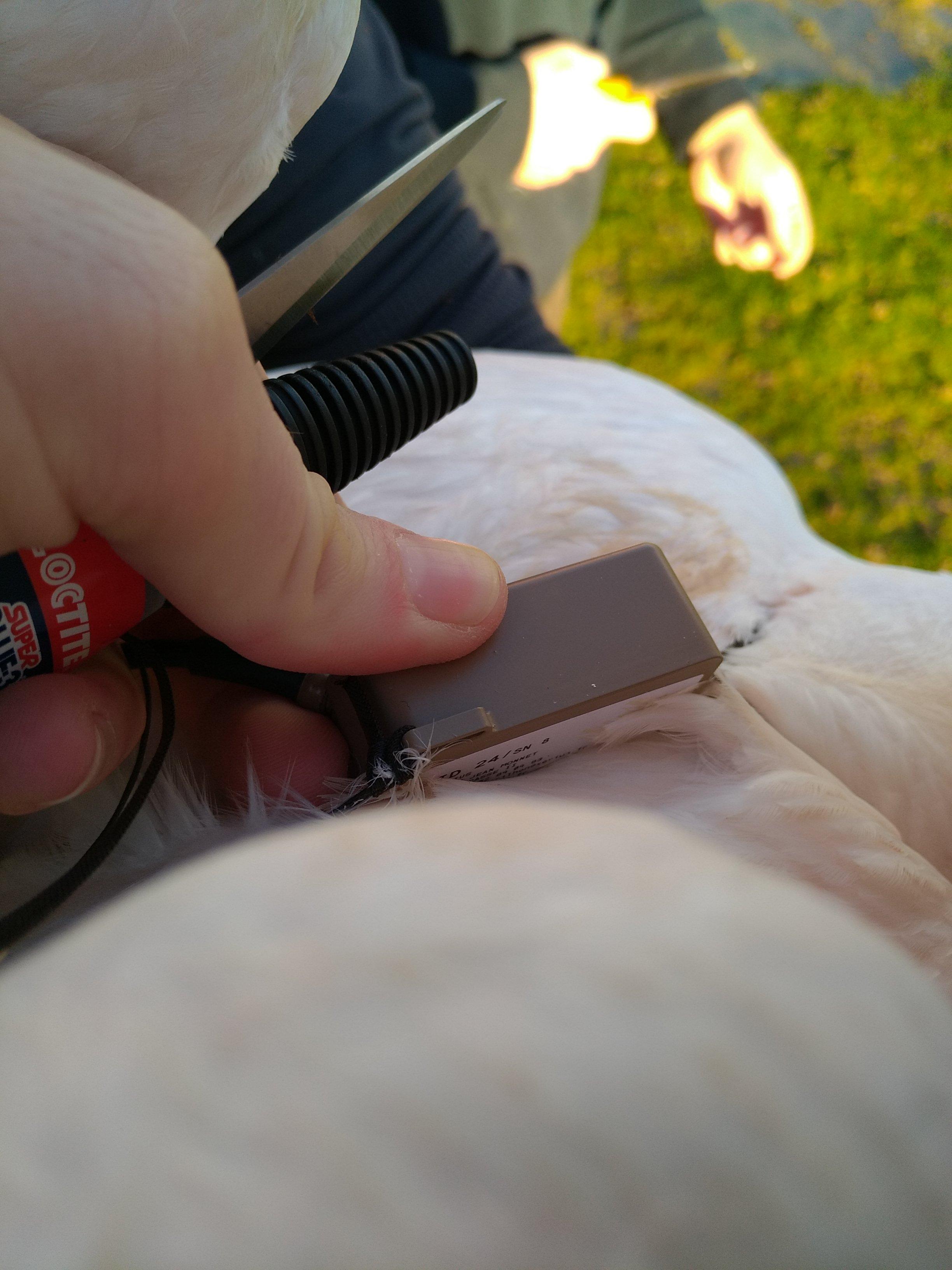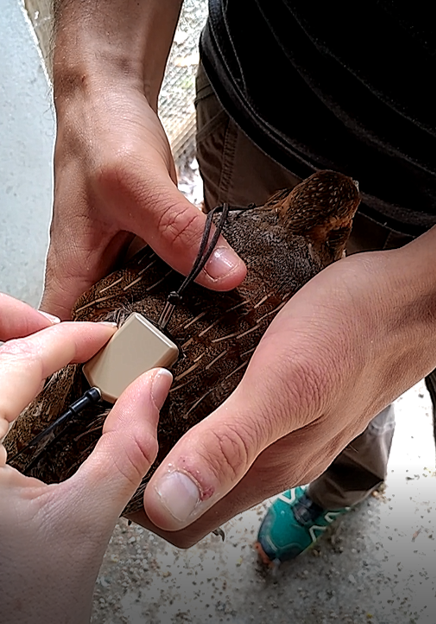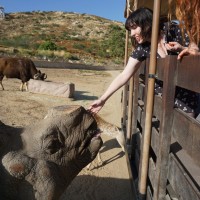We previously spoke with Virginie Perilhon from Xerius Tracking at our Virtual Meetup on Next-Gen Wildlife Tracking. For an overview on Xerius Tracking's present and future innovations, watch Virginie's video from our meetup, and visit our Youtube playlist from this meetup for more on the latest developments in tracking tech.
When facing nearly every major conservation problem from human-wildlife conflict to climate change, monitoring biodiversity and the movement of species is essential to our understanding of the ecosystems we’re protecting. Long before technology made it possible to record movement data from animals in real-time from a distance, naturalists relied on field observations to understand the behavior and ranges of species, a time-consuming process that could only gather incomplete knowledge from what the researcher was able to spot during their limited time on-site.
With the advent of tracking technologies, we’ve since been able to fill in major gaps and answer some of the conservation field’s biggest questions about where animals go and what other species they live amongst within their ecosystems and personal ranges. Like all technologies, tracking devices have become more common, more affordable, more compact, and more diverse through the years, with options in tag and collar forms available to field researchers.

With so many options to choose from, it may seem (from an outside perspective, at least) that tracking technology has solved the issues of biodiversity monitoring. And yet every tech tool has its own strengths and limitations, and it’s vital when choosing a tool to consider the unique challenges that any species or environment could present to long-term or short-term tracking projects, as well as consider how combining technological features could elevate it beyond the scope of a single tool or strategy.
To better understand how tracking technology has adapted to answer questions about bird migrations, a significant area of interest to conservationists and one that has proven uniquely challenging in the past, I spoke with Virginie Perilhon from Xerius Tracking about their custom-built miniaturised devices designed to suit birds of all shapes, sizes, and ranges. Birds in general pose a few challenges when it comes to tracking; firstly, and most obviously, they fly. This alone leads to questions of weight and size when designing a tracking device, as it must be small and light enough to avoid causing any interference when airborne, but sturdy enough to stay put during flight.

This tricky equation leads to a balancing act of design priorities: how much will decreasing size and weight also decrease the device’s lifespan? Then there’s the question of placement of the tracking device. While a mammal can be tagged on the ear or fitted with a collar, a bird’s tracking device can’t interfere with its flight feathers, and must also navigate the issue of molting; if placed on a bird’s soon-to-be-shed tail feathers, for example, your valuable device will be collecting data from its new location on the ground.
The ability to fly also means that birds can cover vast ranges much more quickly than land-bound animals - while a mammal traveling overland only has a limited number of directions in which it can go on any given day, and a certain level of predictability based on speed and terrain, a bird has many more directional options and could turn up just about anywhere within its range. Again, this fact may seem obvious, but that doesn’t mean it can’t throw a wrench into biodiversity monitoring plans. Because birds can move so easily from one location to another, regardless of the terrain down below, a bird’s tracking device is apt to go out-of-range depending on where it ends up, leading to incomplete data.

When customising a transmitter, Virginie breaks down the factors that play a role in the final product by explaining, “For the UHF, I would need to know where the bird is going, and in what environment to determine the range. Then we could determine the Argos zone and program the transmitters in consequence. For the GPS, everything is fully programmable. In function of the environment, we could have higher time of acquisition, higher HDOP, and lower number of satellites. We could manage it in function to limit energy consumption and make sure you will get a correct GPS fix.”
And then there are the additional challenges presented by migration patterns, which elevate these questions to a long-term and global scale. How can one bird be successfully tracked across thousands of miles, beyond the boundaries of reliable service, over months or even years? What about a flock of birds, or even one hundred birds? Getting large amounts of long-term data is crucial to making sense of migratory birds’ ranges and behavior, and this happens to be Xerius Tracking’s area of expertise.

Virginie of Xerius Tracking describes the BioLoc System like so:
“Building on its core radiofrequency engineering background, Xerius Tracking develops miniaturised devices using GPS, Argos, VHF/UHF, GSM and Bluetooth technologies. Our main solution comprises miniaturised GPS/UHF devices which can communicate using both Low Power Wide Area Networks (LPWAN) technology and a direct-to-satellite data link (Argos). Xerius Tracking has developed super-lightweight BioLoc transmitters which can be collared or back-packed on species. The use of geofencing to switch to an Argos satellite network when ground-based UHF communication networks are not within reach offers a hybrid Space-LPWAN solution, combining efficiency with global connectivity. The combination of UHF devices communicating with Argos technology is cutting-edge, mirroring state-of-the-art ‘IoT Sat’ systems which aim to provide Argos and UHF ultra-low power communication anywhere on earth.”
Originally designed to track birds in harsh terrains that pose connectivity issues, Xerius’s range of devices utilize a blend of autonomous and solar-powered BioLoc stations, satellite networks, and Bluetooth to seamlessly relay data back to the researcher over long distances. The BioLoc tag can also provide data beyond just location, as these very small and light devices integrate the following features: GPS, an accelerometer [1Hz, 10Hz, 25Hz, or 50Hz, and able to associate the ACC with GPS fixes to better optimize ACC monitoring], memory storage, temperature sensors, and a UHF link [two frequencies]. Their devices are also customizable and programmable, and you can request devices designed for specific birds or projects. The BioLoc receiver stations, which provide you with your own private and secure network, are also sturdy and long-lasting, with a decrease of battery power after five years of use (good news for researchers working in rough terrain who will not be able to access a station easily and regularly).
Conveniently, the GPS format is compatible with Google Earth and Google Maps, allowing for easy data visualisation possibilities, and the system also makes it easy to incorporate raw data into other studies. And most importantly, the BioLoc stations allow you to collect data from a large quantity of tags at once - up to 240 transmitters at once! This opens up possibilities for tracking different species or large populations of birds within one area, allowing for richer and more comprehensive data from just one station.

Virginie breaks down the BioLoc system’s unique technical qualities by explaining, “Transmitters in 22grs have very high efficiency solar panels (just half a day to recharge completely from Vmin to Vmax). In 2grs PCB, we embedded Argos/GPS/UHF/Acc/Memory. Furthermore, the BioLoc receiver is very sensitive: -134dbm, which permits it to cover a very long range. The regular version has an omni-directional antenna with a range of 70kms. But if you want to get more, we can also fit a directional antenna to obtain an even larger range. Each receiver can communicate with each other, creating a wider area of connection if needed, and can be embedded with many custom features.”
Like all conservation technology tools, Xerius’s tracking devices are improving as technology continues to advance, yet there are still limitations to overcome in the future. From Virginie’s perspective, the major limitation today lies in the weight of the battery and device housing. If you consider how our most common technology, cellphones, have shrunk in size yet increased exponentially in capabilities over the past three decades, it’s not difficult to imagine that conservation technology is following a similar trajectory, aiming to continually become smaller and more convenient without sacrificing functionality.
In our conversation about how she thinks Xerius Tracking’s devices could still improve, Virginie told me, “For the battery, we use long-lasting lithium batteries with the higher capacity level. We hope we will have some new innovation soon. We hope in the future we could develop <5grs transmitters with full options (Argos/GPS/UHF/Acc/Memory) and housing included!” Virginie also takes into account the limitations naturally posed by terrain, saying, “Considering the range, it will be hard to increase our sensibility level, as we’ve already got -134dbm. The limitation is due to environment - UHF is not magical, and it still has lots of mysteries about it.”

Meanwhile, Xerius Tracking is gearing up to tackle new challenges in its biggest projects to date. Although COVID-19 has impacted field research around the world, postponing innumerable biodiversity monitoring projects among others, and has further impacted access to some technological tools by slowing deliveries and production, Virginie is hopeful that new field monitoring projects will resume soon. They’re currently working to expand their transmitter line for small mammals, starting with a collar device for brown hares, of which more than 100 will be tracked through this system. And back in their avian realm of expertise, a massive project is in the works that will allow Xerius to flex its data-gathering capabilities: tracking thousands of the world’s most ubiquitous birds, pigeons! We look forward to seeing how biodiversity monitoring efforts will grow over the next decade, and seeing how tech innovators like those at Xerius Tracking will help to lead the charge.
A big thank you to Virginie Perilhon for talking with us for this article!


Add the first post in this thread.